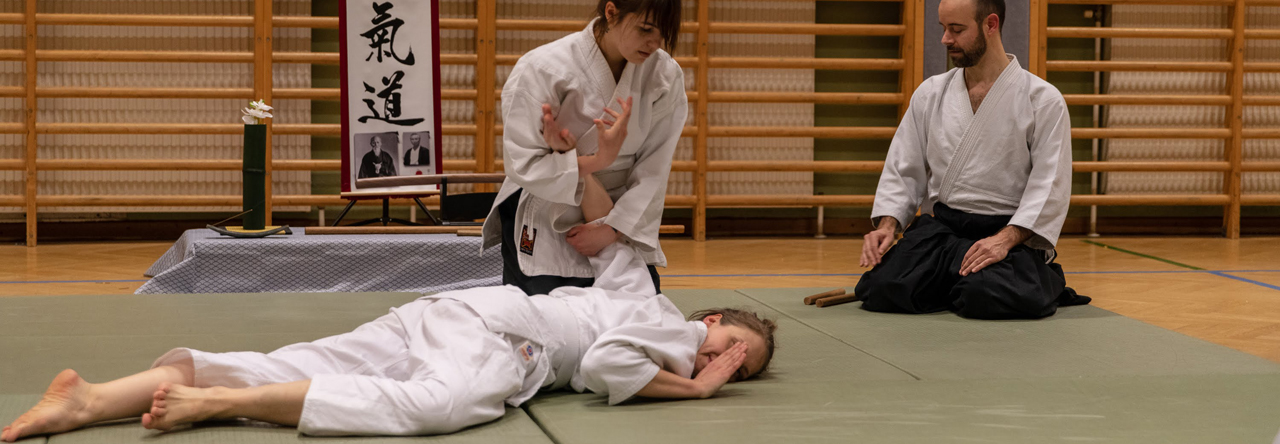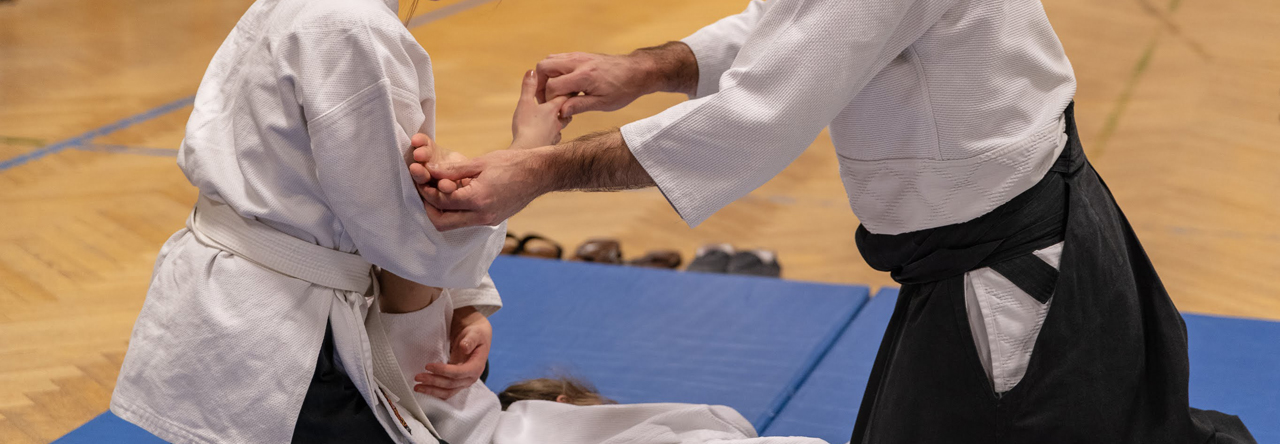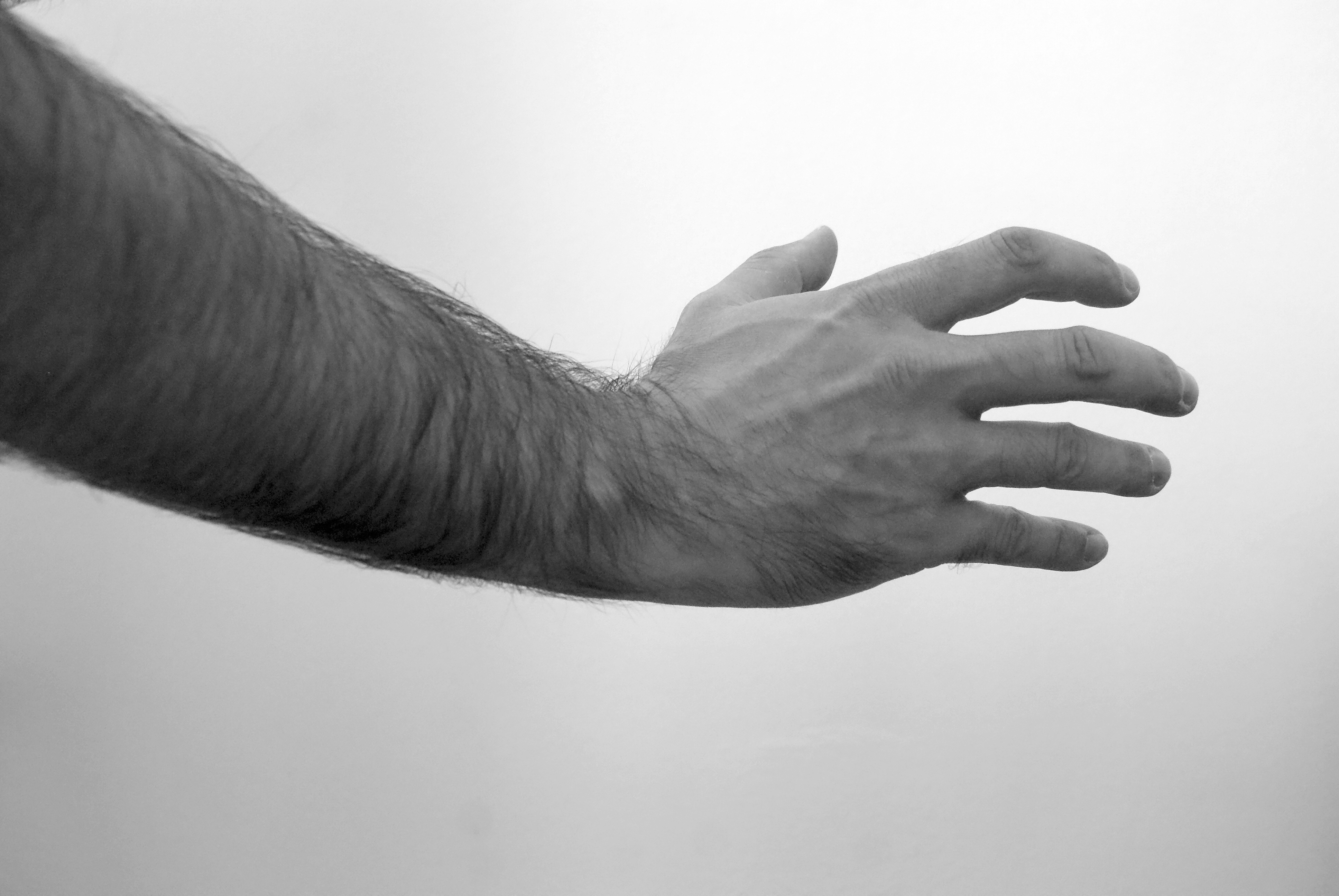Techniques of control (katame/osae waza) and some of its meanings explained
In general the basic techniques (kihon waza) in Aikido can be categorized into …
- nage waza (投げ 技): throwing techniques
- katame or osae waza (固め or 押さえ 技): fixation resp. immobilization/control techniques
- nage katame waza (投げ 固め 技): throwing techniques leading directly to a fixation/immobilization techniques

Now we take a closer look on the “katame waza”-section, containing mainly of the five well known teachings called ikkyo, nikyo, sankyo, yonkyo and gokyo. As these names are only an enumeration (first to fifth teaching), they do not tell very much about its meaning. Luckily every teaching has also a non-shortened name shown in the following list:
- ikkyo (一教): first teaching
aka. ude osae (腕 押さえ): arm control - nikyo (二教): second teaching
aka. kote* mawashi (小手 廻し): turn, circumference forearm - sankyo (三教): third teaching
aka. kote hineri (小手 捻り): twist forearm - yonkyo (四教): forth teaching
aka. tekubi** osae (手首 押さえ): wrist control - gokyo (五教): fifth teaching
aka. ude nobashi (腕 延ばし): extended arm
In some schools also rokkyo is used as a synonym for hiji kime osae:
- rokkyo (六教): sixth teaching
aka. hiji kime osae (肘 極め 押さえ): elbow locking control

Additional forms of katame waza, depending on the style/school can also be:
- juji garami (十字 絡み): cross interaction, linkage
It can also be performed as nage waza, called juji nage (十字 投げ, cross throw) - ude garami (腕 絡み): entwine the arm
- hiji k(g)atame (肘 固め): elbow fixation
- hiji kime osae (肘 極め 押さえ): elbow locking control (aka rokkyo)
- ude hishigi (腕 挫): arm crush, break
- (…)
Maybe this explanations are useful for remembering the terms and its linkage to the techniques as well as for a better understanding how these katame-principles should be applied in practical use.
Notes
* kote (小手): 小 means small l, 手 means hand; kote is commonly translated as wrist; but it is sometimes defined as the part from the fingertips to elbow too. So just keep in mind, not only focusing on the wrist itself, if you hear/read about kote.
** tekubi (手首, lit.: neck of the hand) i.e. is another writing, especially used for the wrist part.

References:
Hademitzky, Wolfgang: Kanji und Kana. Die Welt der japanischen Schrift in einem Band. Lernbuch und Lexikon. München: Iudicium Verlag GmbH, 2012.
Taylor, Michael W. (2004): Aikidō terminology. An essential reference …
jisho.org (2019)
wadoku.de (2019)